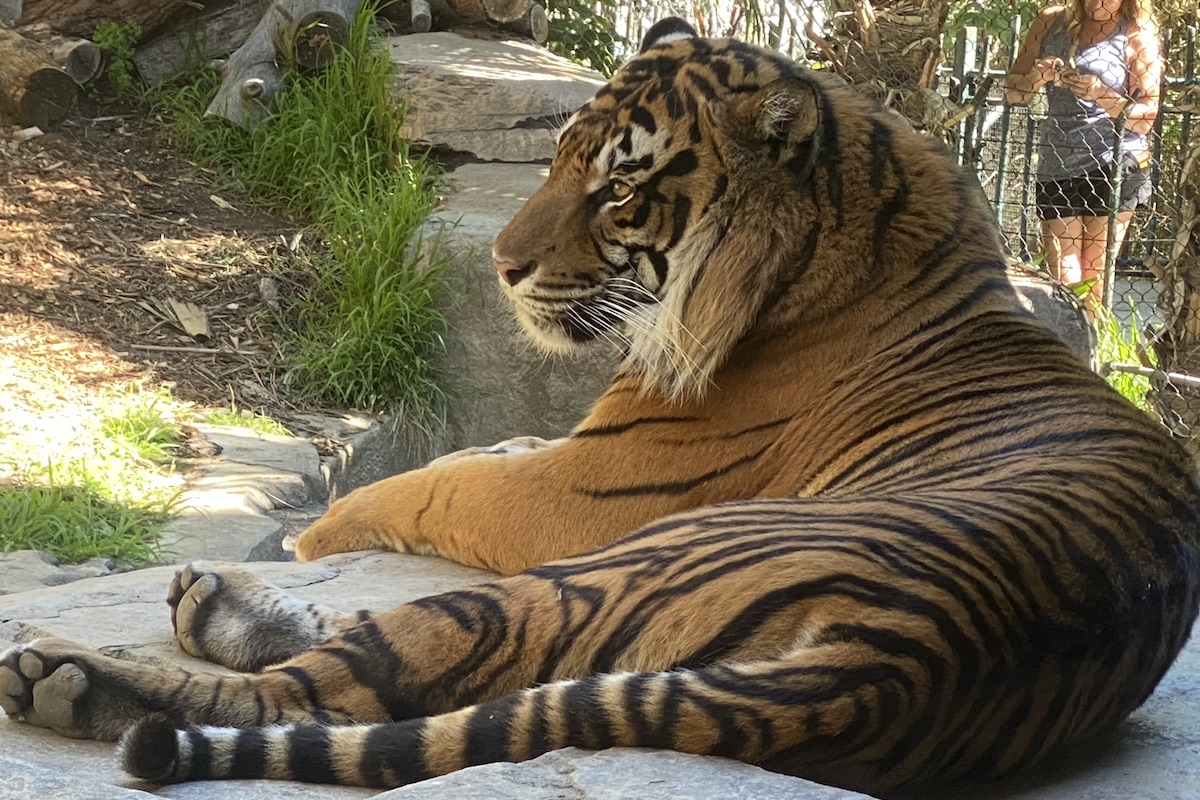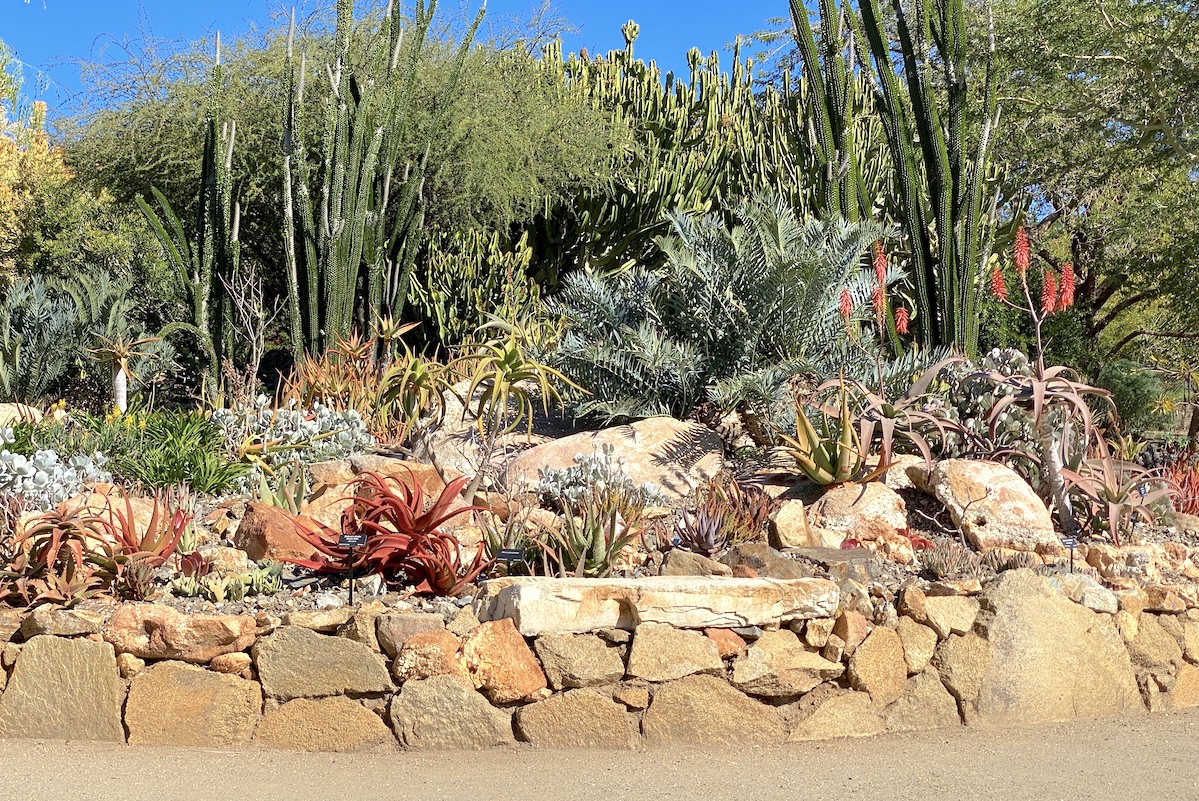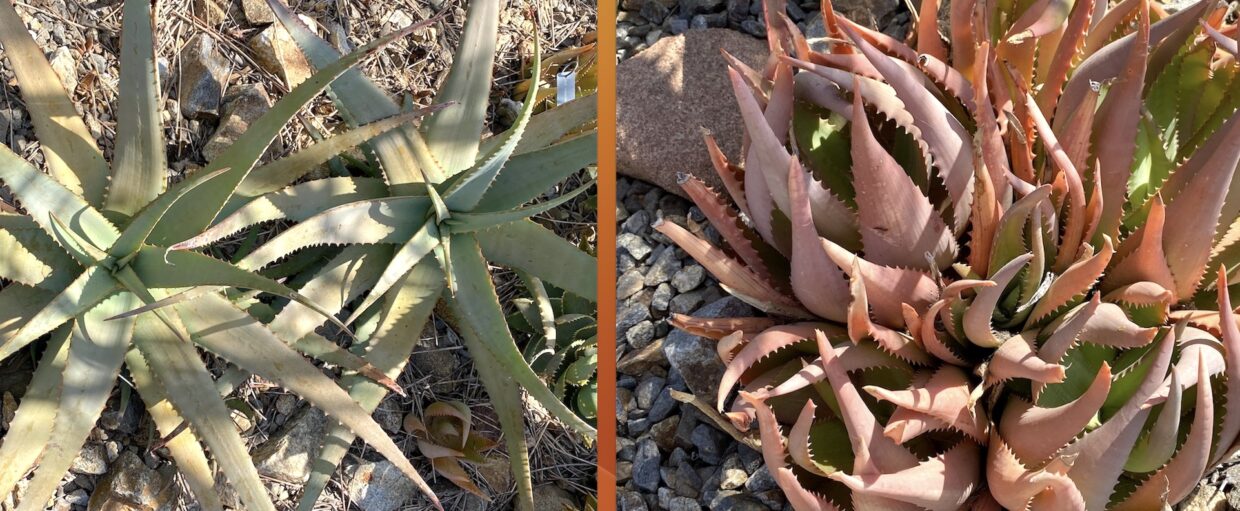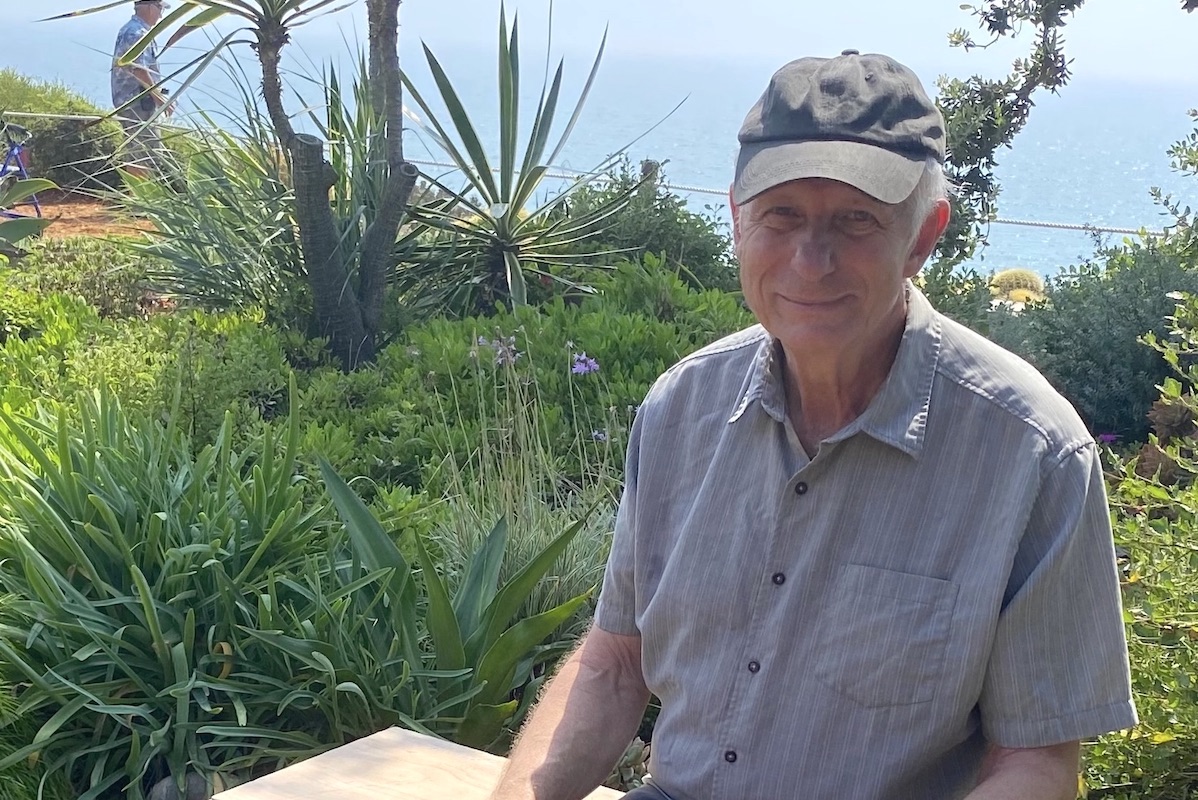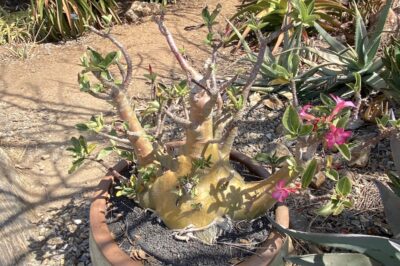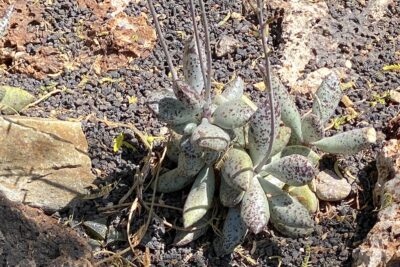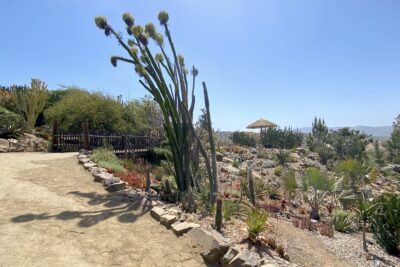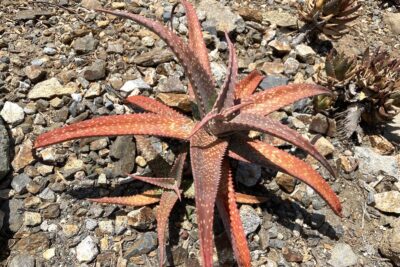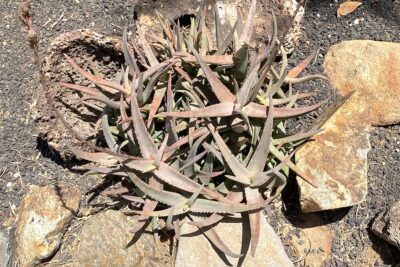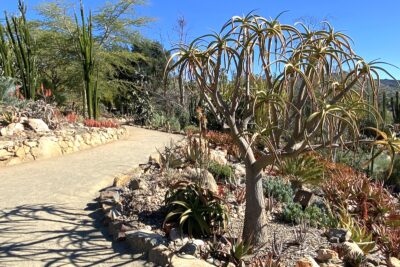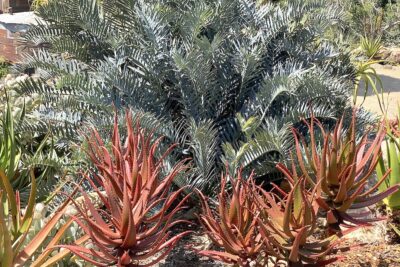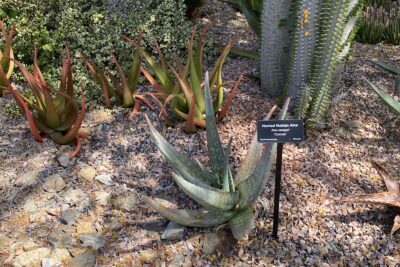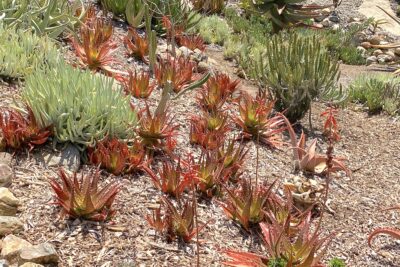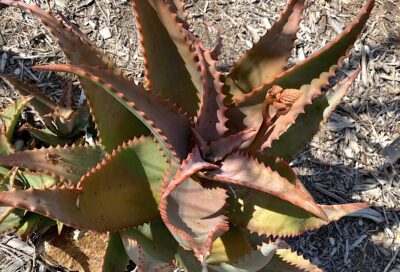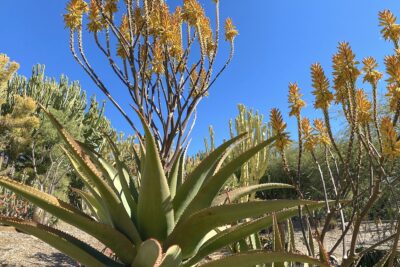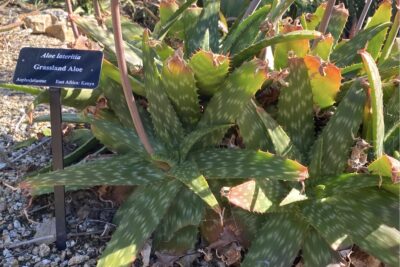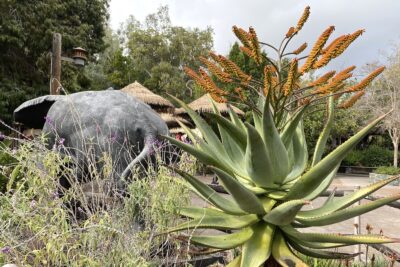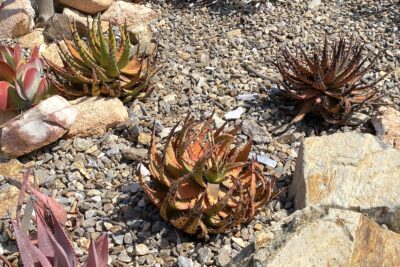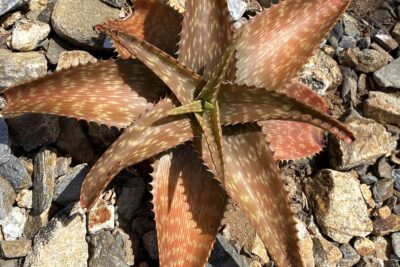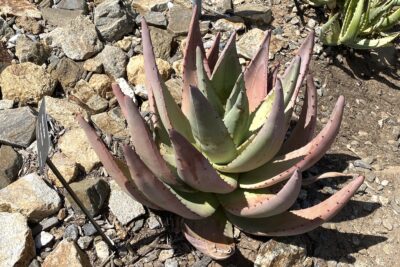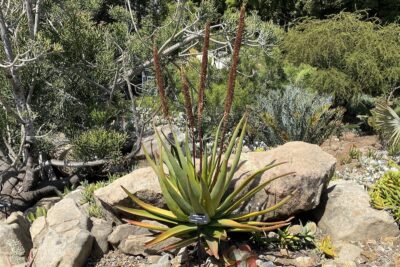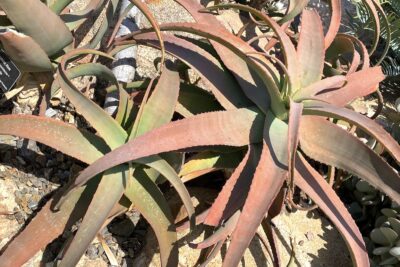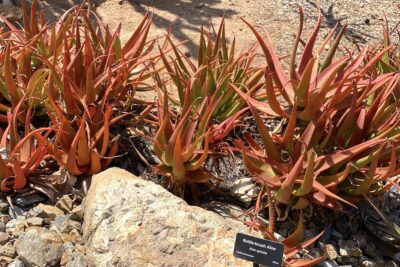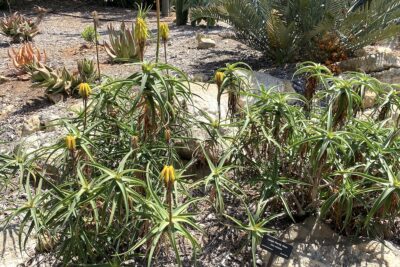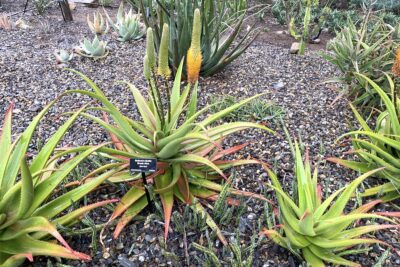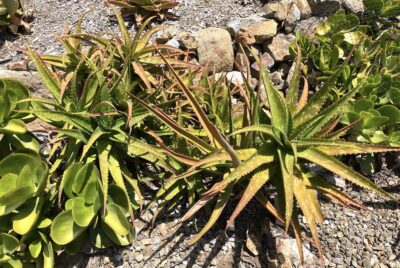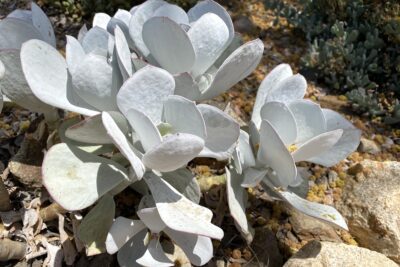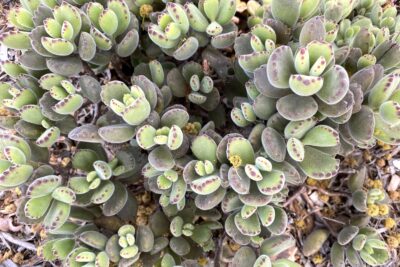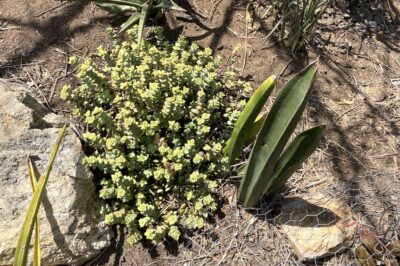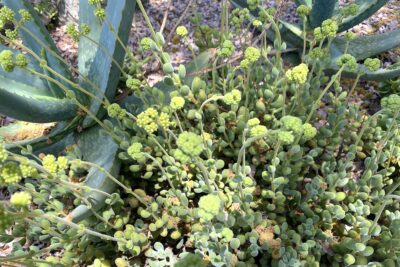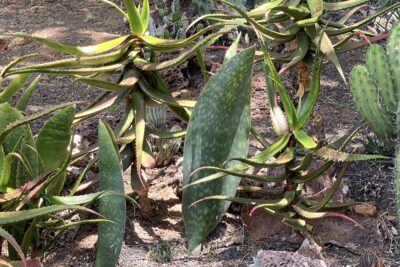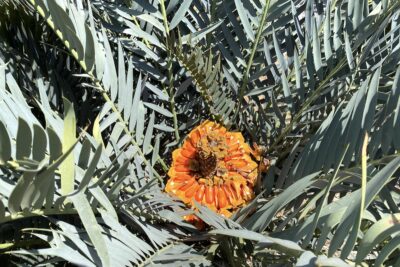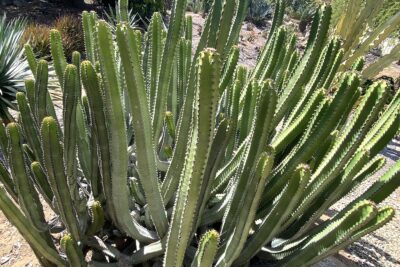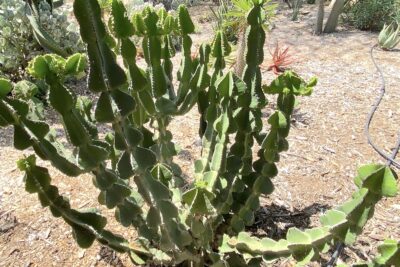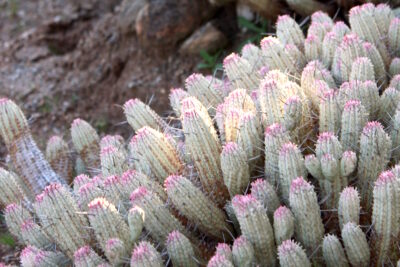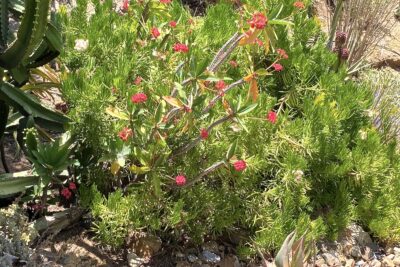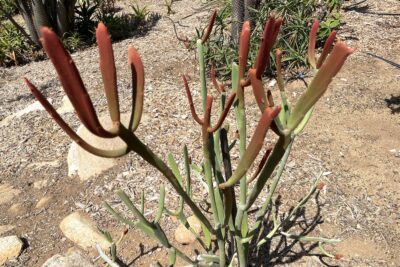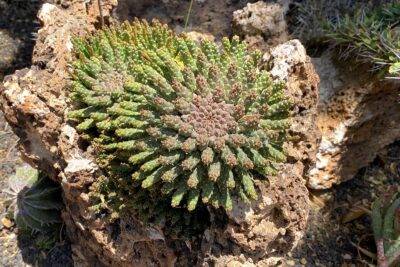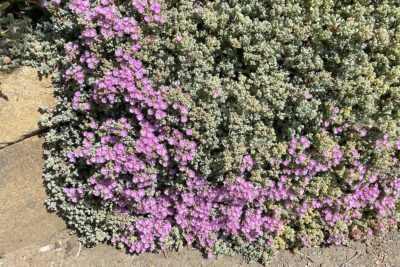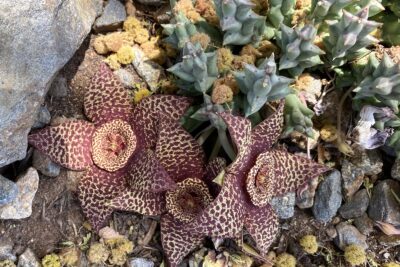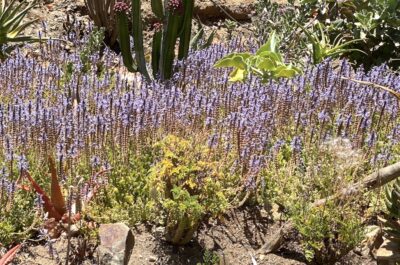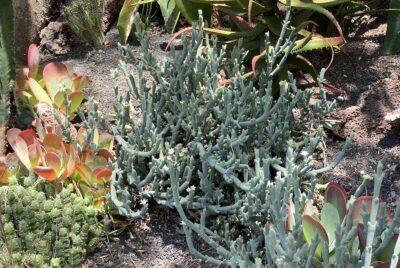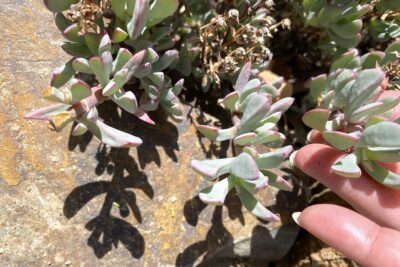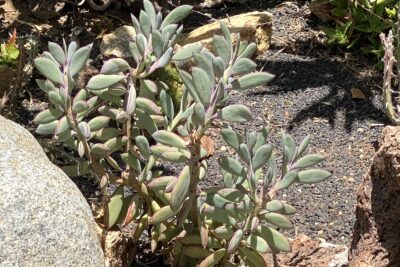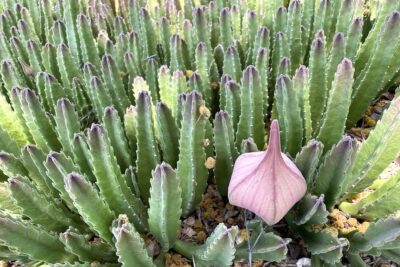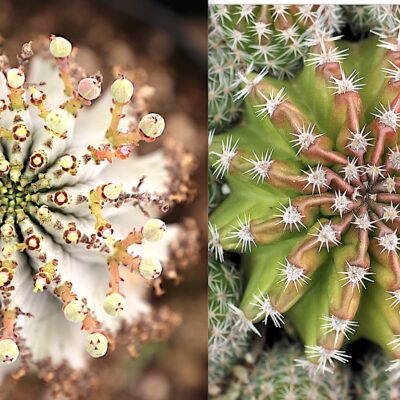In my new video, we observe and learn how to relocate a Beaucarnea recurvata (ponytail palm) that had become too large for a homeowner's side yard. "Betty" is a gorgeous specimen: ten to 12 years old, nicely branched, and 7 feet tall; with a 3-foot-diameter, half-ton caudex. No doubt you'll marvel---as I did---at how Laura Eubanks and the Design for Serenity team tackled the tree's removal and replanting. All involved---myself, Laura, Kathy (the previous owner) and Cathy (new owner) are delighted with Betty's re-homing.
Horticulturally, these are "caudiciform" succulents. The onion-shaped caudex (swollen base) stores water and nutrients. Topknots of pendant, ribbon-like leaves doubtless inspired the common name ponytail palm, but IMHO it's more of a mop.
Yes, you do need the right spot for this exotic, easy-care tree succulent with loads of personality. Hm. How about your living room? Small ones make perfectly...
Polite houseplants
A beaucarnea will sit for years in a pot looking much the same---slightly larger over time---and needing minimal attention or water.
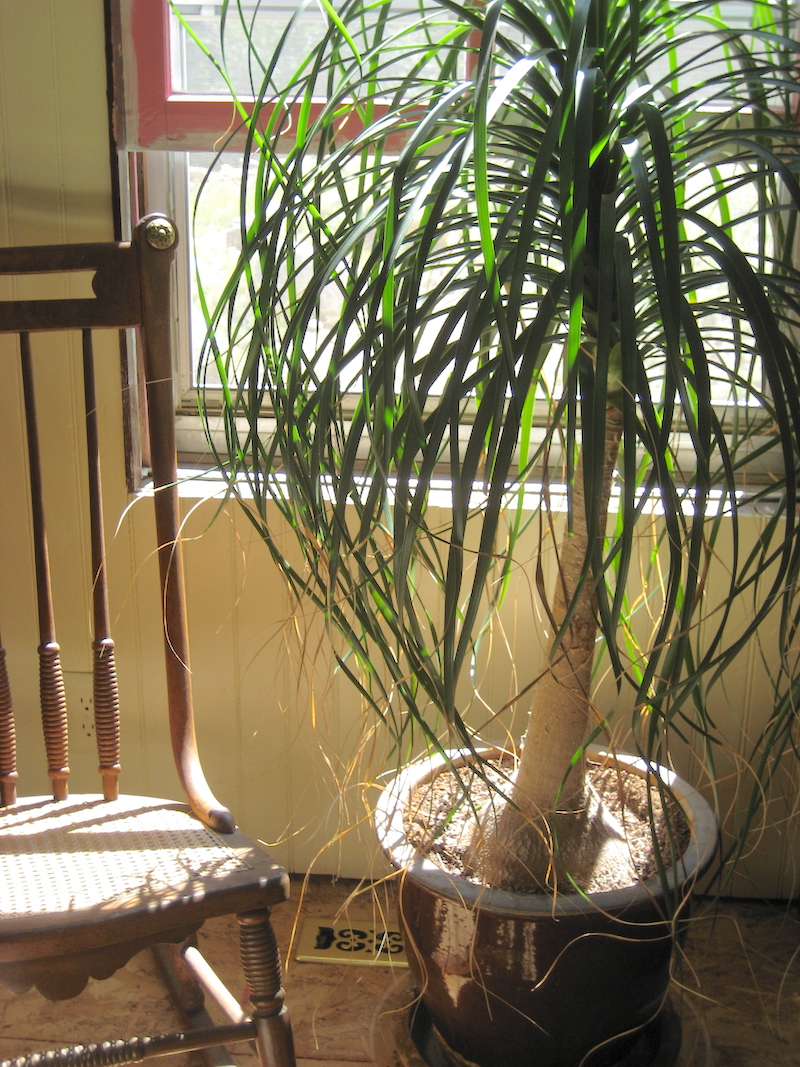
Beaucarnea recurvata thrives in a Georgetown, Colorado home regardless of outdoor temps.
Potted beaucarneas grow an inch or so in diameter and 6 inches in height a year. They need repotting every two to three years (when smaller than a grapefruit), and every 5 to 6 years if larger.
Repot when there's about an inch gap between the soil at the base of the caudex and the inner rim of the pot. Outdoors, because of air circulation, pests are seldom a problem. Indoors, watch for mealy bugs and treat accordingly.
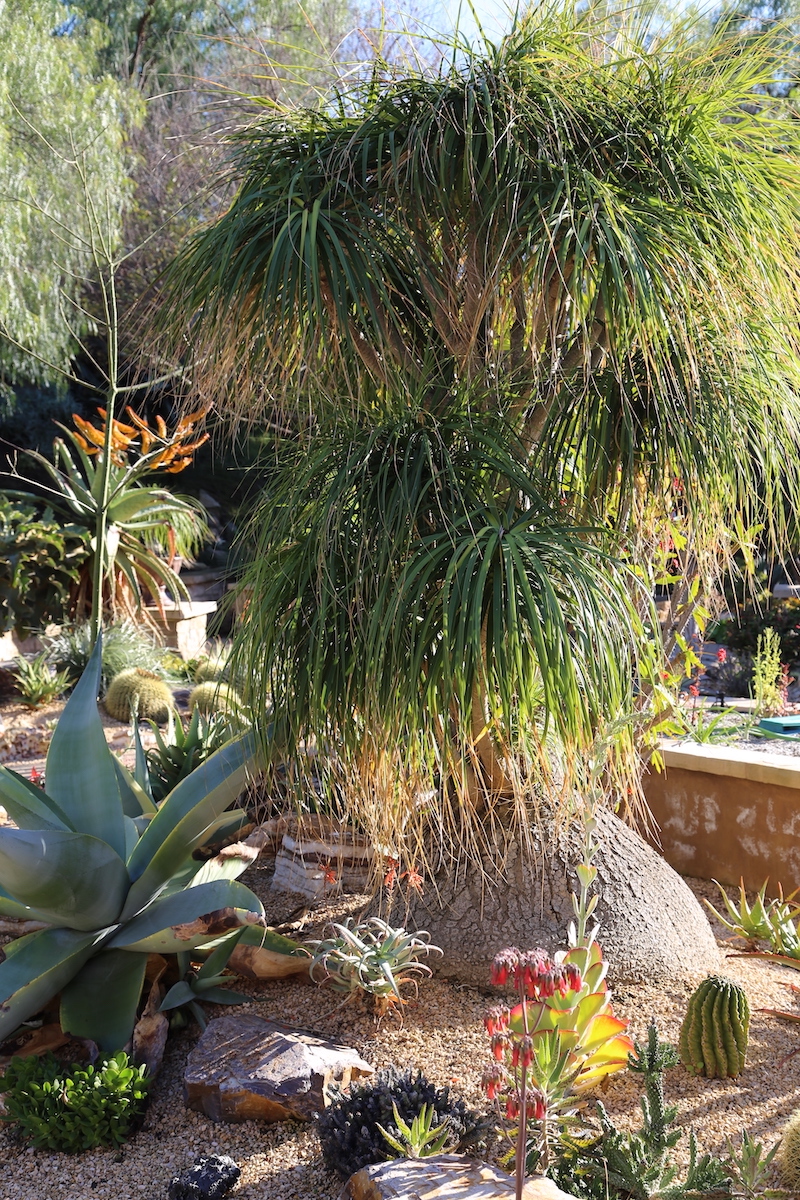 Beaucarnea recurvata adds height, texture and interest to a Southern CA garden
Beaucarnea recurvata adds height, texture and interest to a Southern CA garden
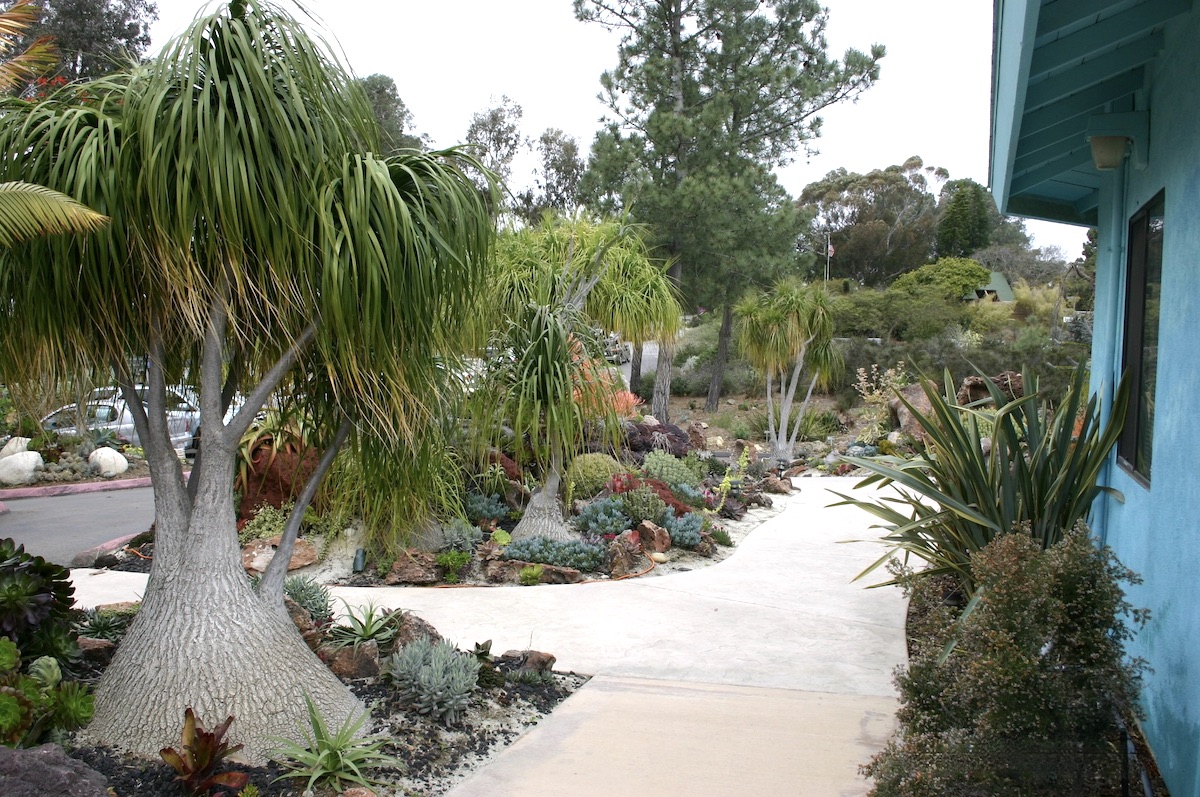
Several mature beaucarneas enhance the undersea succulent display at the San Diego Botanic Garden
Outdoors: A terrific succulent tree
If yours is a mild climate, one or more beaucarneas will add height, texture, shade, and interest to your low-water landscape. I planted four in my garden about a decade ago.
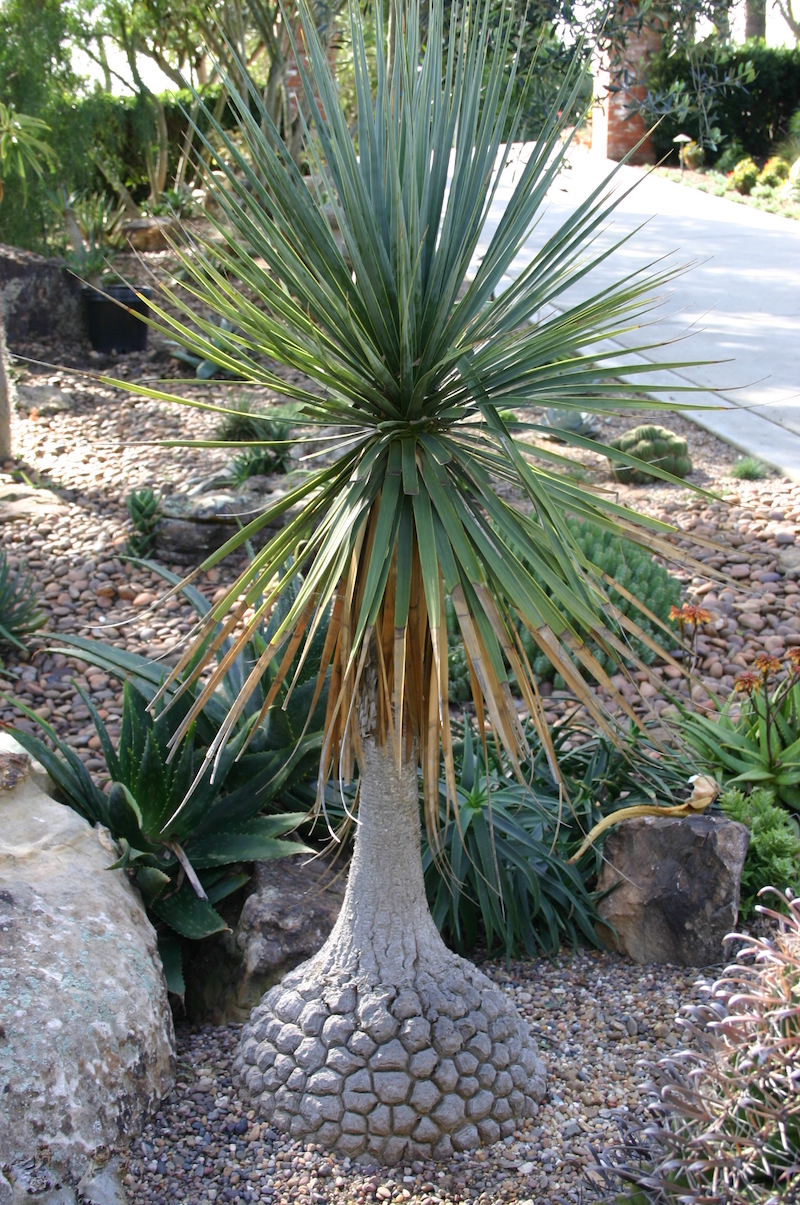
Beaucarnea stricta, 5 or 6 years old. From Designing with Succulents
Leaves of Beaucarnea stricta are stiff and give the crown a pincushion appearance. The stricta species is less common than recurvata and tends to be more prized---and pricey.
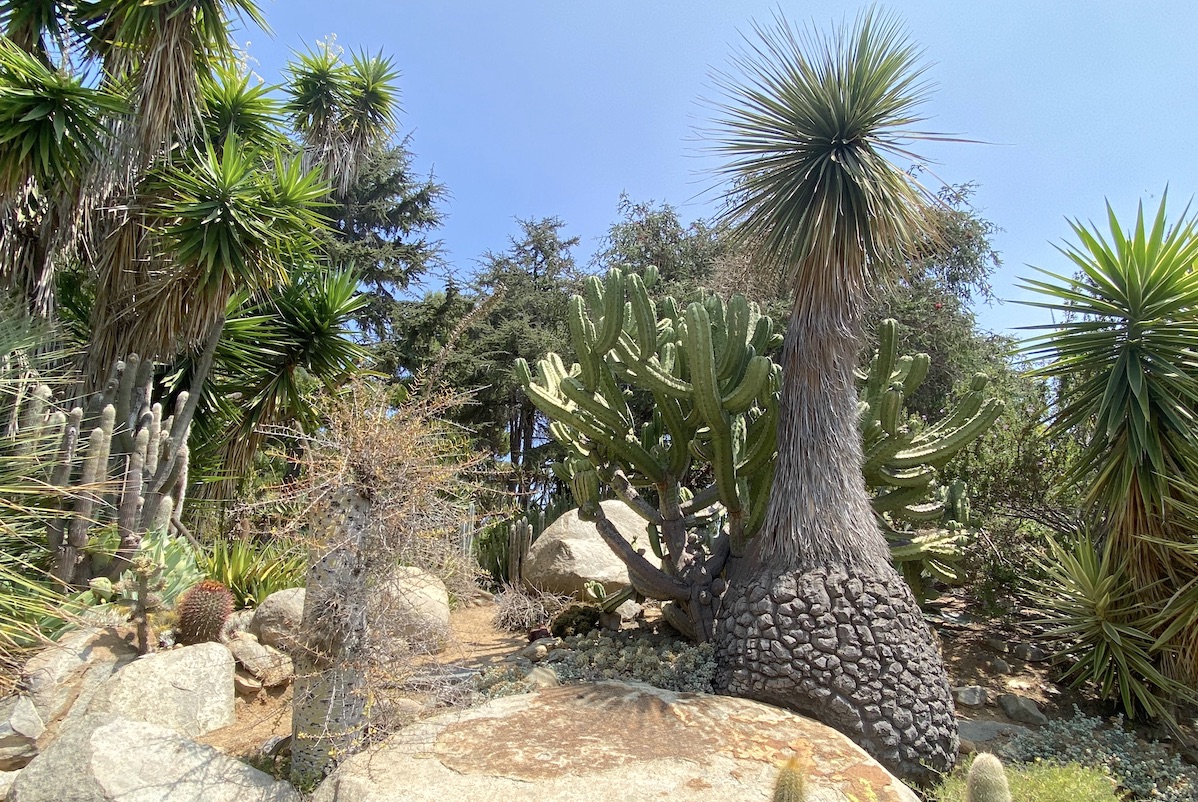
A decades-old Beaucarnea stricta has a magnificent fissured caudex. Palomar College succulent garden, San Marcos, CA
Highly desirable yet harder to come by is a variegate of Beaucarnea recurvata with green-and-yellow leaves.
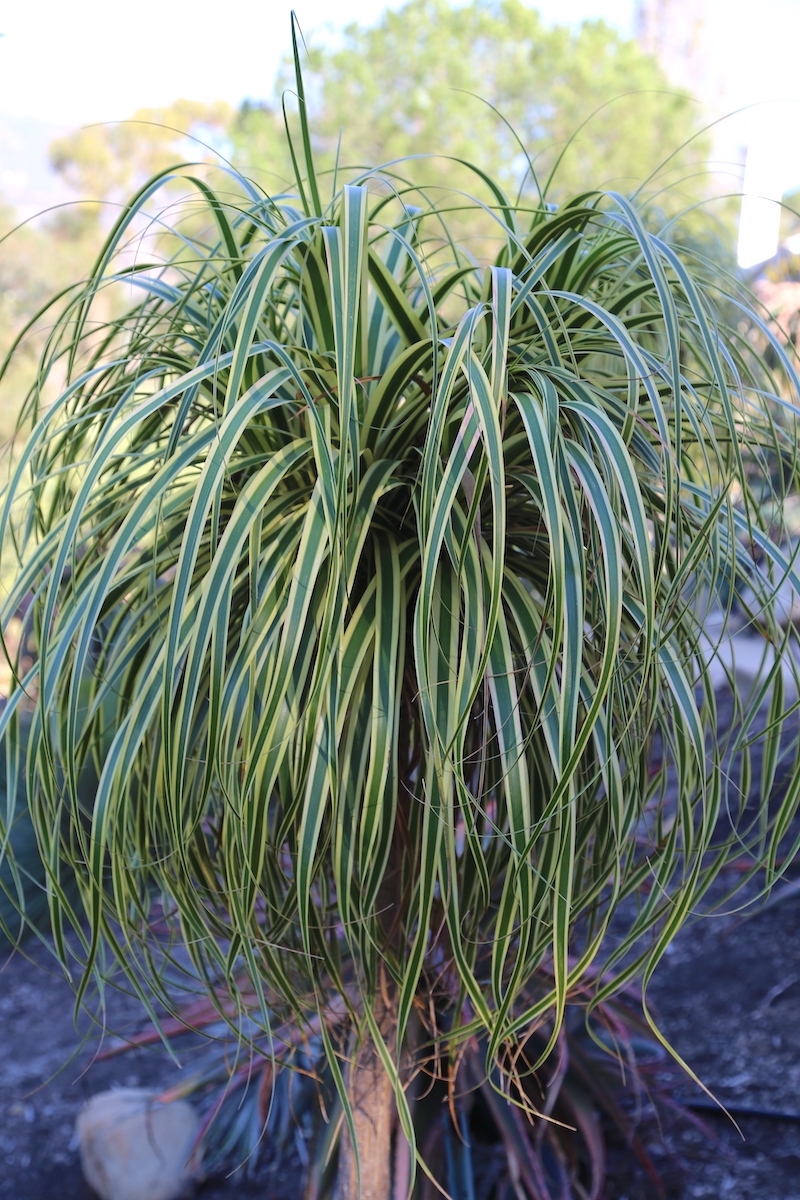
Beaucarnea recurvata 'Variegata'
New growth of seldom-seen Beaucarnea guatemalensis flushes red.
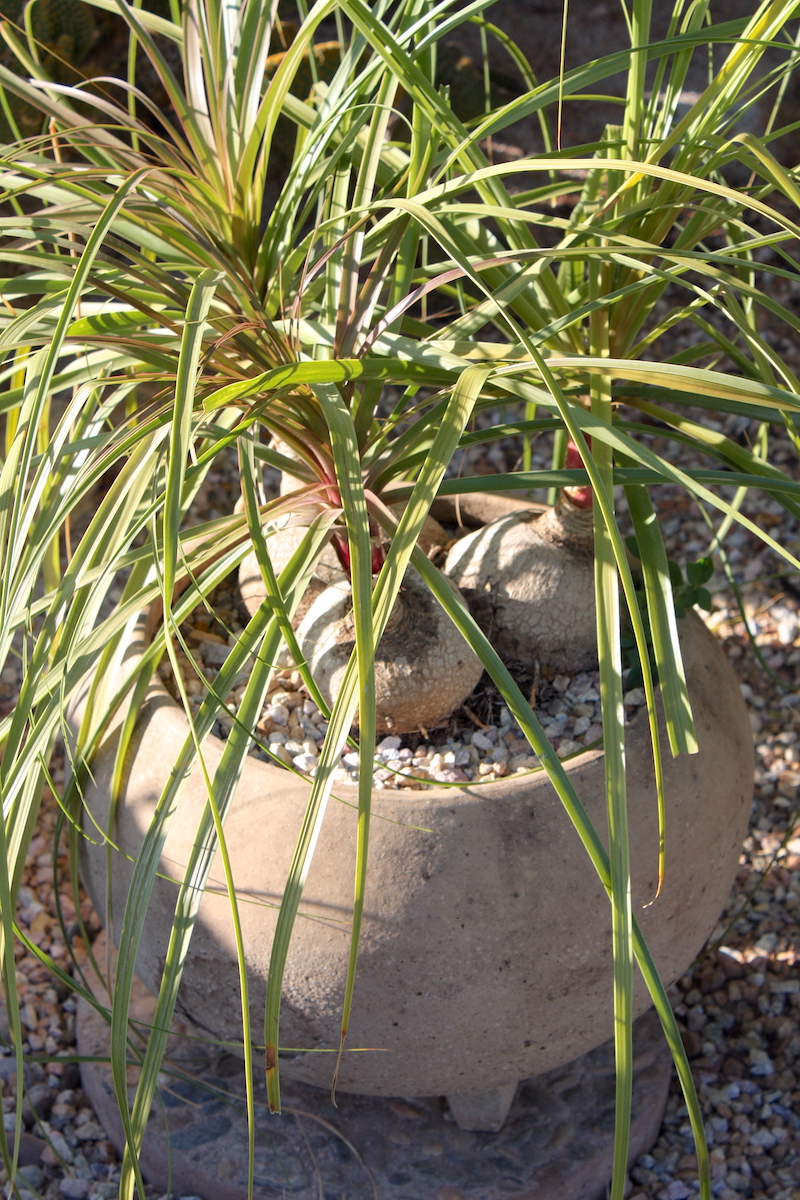
A three-caudex cluster of Beaucarnea guatemalensis
Cultivation
Beaucarneas, which are not palms, are native to Mexico. I've read they don't do well in temps below 50 F, but mine have been fine after nighttime temps dropped into the 30s and even below freezing (32 F).
Err on the side of caution, and cover small in-ground specimens when frost is forecast. If you have potted outdoor beaucarneas, move them to a warmer and sheltered spot.
Locate an indoor beaucarnea where it'll get bright light from a window, and rotate it monthly for balanced growth. Outdoors, the plants like the same exposure as other succulents: Full sun along the coast and half-day sun inland. They're not suited for the desert or cold, rainy climates.
Clusters of leaves act as parasols to protect the skin from strong sunlight. Caution: Those strappy leaves are serrated, and can cut if you're not careful.
Indoors or out, fertilizing isn't necessary, but a light application in spring will encourage growth.
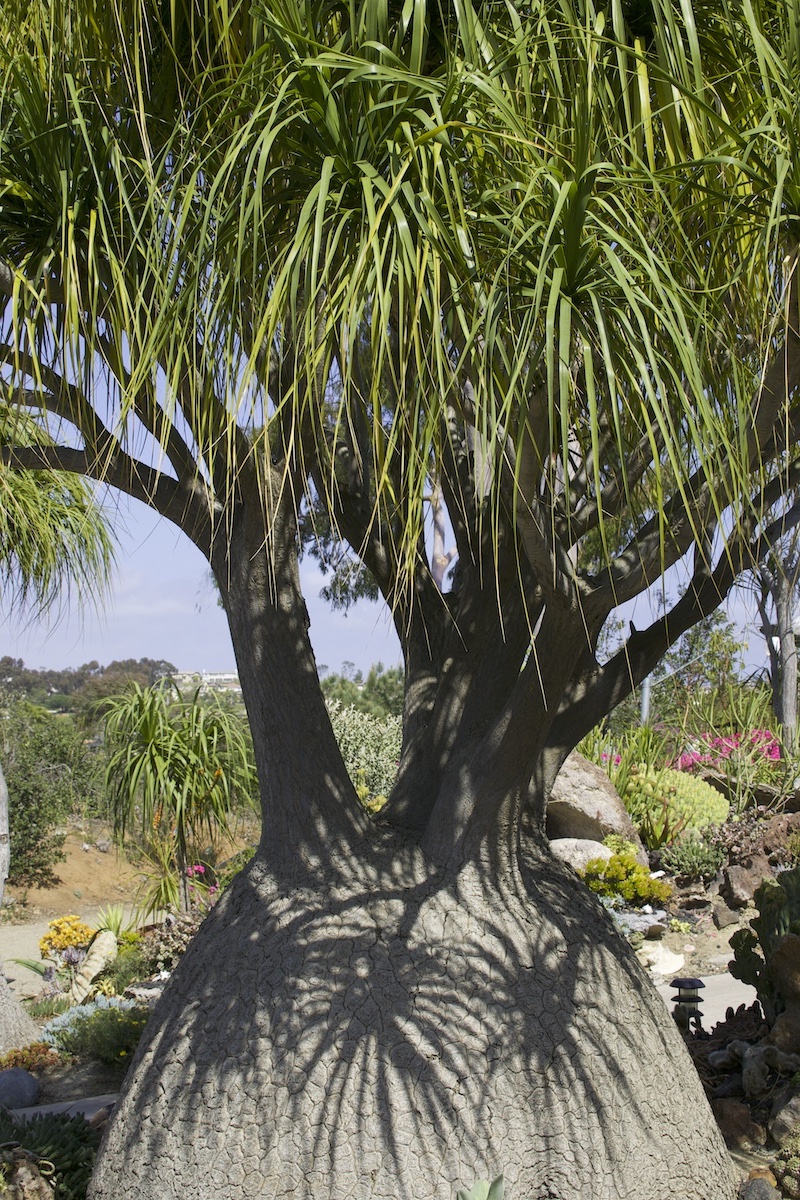
Shooting-star shadows on the caudex are a bonus with beaucarneas
Although the plants grow glacially, do plan for eventual girth and height. A caudex that starts out softball-sized will someday need a parking space. As you'll discover in my Transplanting a Beaucarnea video, in-ground plants can attain three or four feet in diameter and six or seven feet in height in a dozen years or so. They may double that in 25 or 30.

From the video: Team DFS loads a half-ton ponytail palm (Beaucarnea recurvata) onto a flatbed trailer
Of the whiskery, sparse roots, Laura Eubanks says "they're optional." And because a plant can live off its caudex, "beaucarneas are the camels of the plant world."
Don't let it get waterlogged
Rot is a beaucarnea's biggest threat. Water indoor plants sparingly, once a month or so, and not at all in winter. Outdoors, position the caudex atop well-drained soil so rain or irrigation doesn't puddle around the base.
Btw, if soil happens to fall against the caudex, it may root into it. Clip them and remove the soil...or not...so long as the Hershey's Kiss caudex doesn't remain moist for an extended period.
The look
I'll bet Beaucarnea recurvata inspired whimsical trees in children's books by Dr. Seuss (who BTW lived in San Diego).
I like beaucarneas best when compact and full. Three of mine have branched; the fourth---a Seussian topknot above a 5-foot trunk---may get removed. It's leaning toward the morning sun, and I'm tired of looking at it. (First, I'll try cutting it back in the hope it'll branch.)
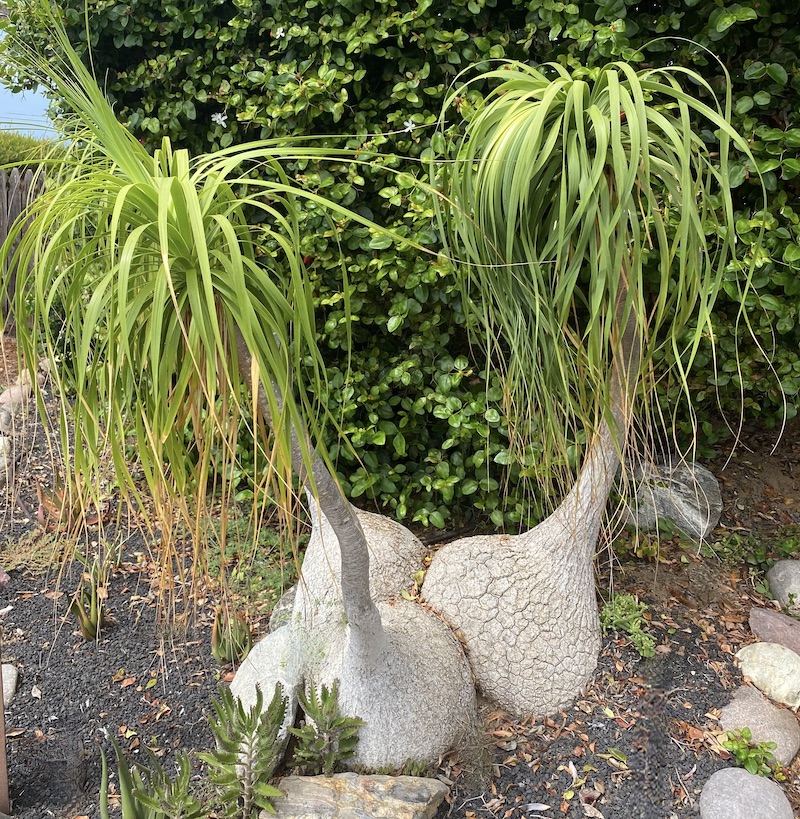
A triple-caudex, in-ground beaucarnea grouping at the Self Realization Fellowship Garden, Encinitas, CA
Flowers
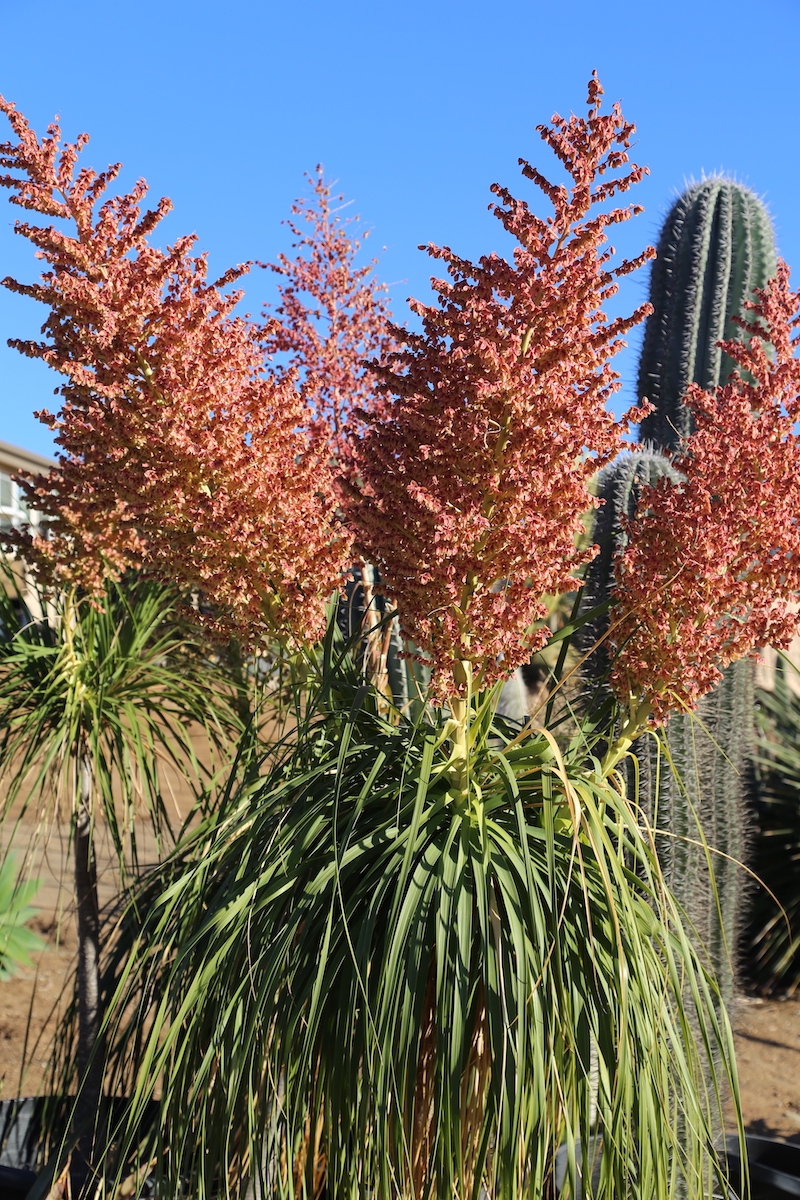
A female Beaucarnea recurvata has tall, fluffy sprays of pink seed pods
The plants are dioecious, meaning any given specimen is male or female. They'll bloom after 8 or 10 years with tall, feathery sprays of tiny, cream-colored flowers. Male flowers, which produce pollen, fade and become straw-like. Female flowers, if pollinated, form itty-bitty seed pods that blush shades of rosy pink.
Btw, only one of mine has bloomed, and the flowers stayed white, but that doesn't mean it isn't a female...merely that no males were nearby (and blooming) to provide pollen.
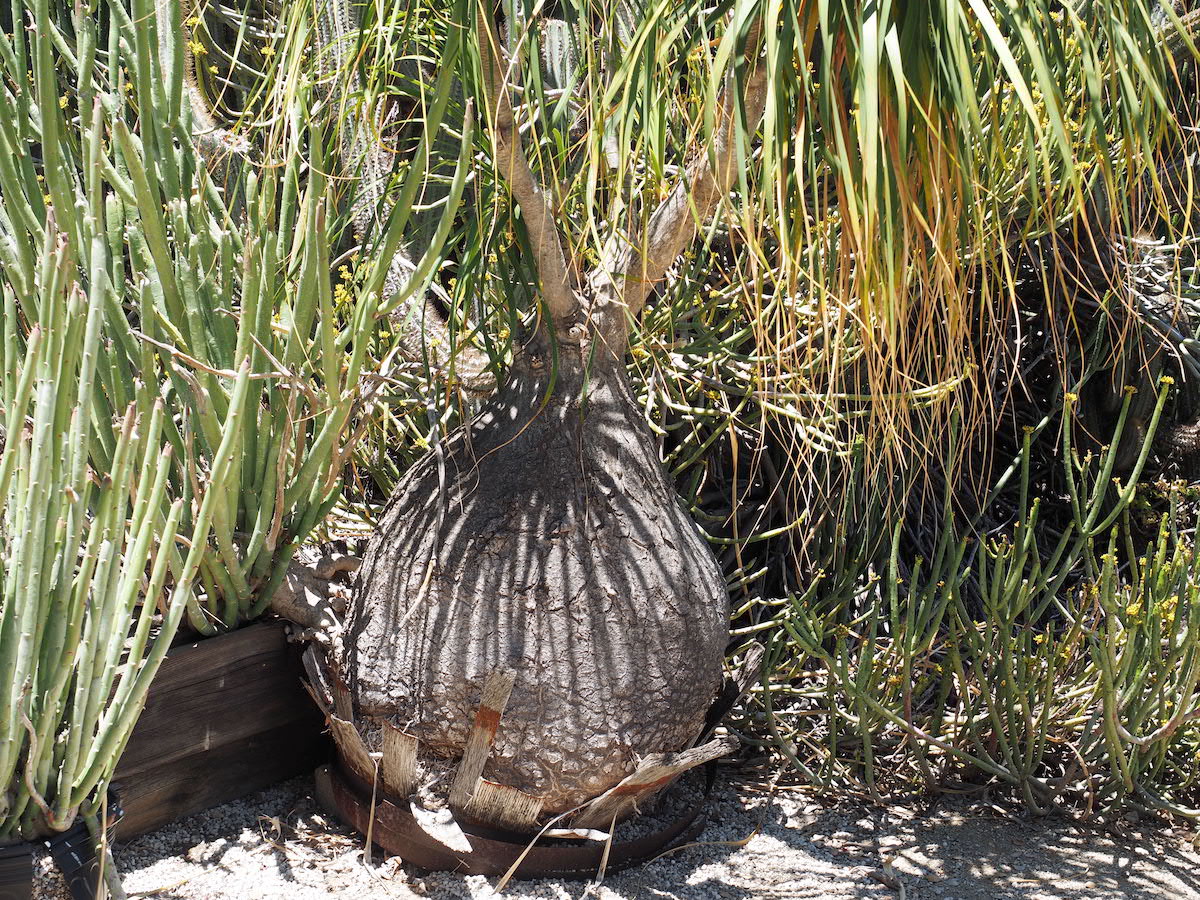
This neglected Beaucarnea recurvata at a nursery is attempting to plant itself
Grooming
Leaves may turn yellow and become brown-tipped over time. As lowest (older) ones wither, new top growth will replace them. Simply snip what's unsightly.
Lastly, do designate who gets your beaucarnea. It'll likely outlive you.
The post Yes, You Can Grow Beaucarnea recurvata (ponytail palm) appeared first on Debra Lee Baldwin. Copyright © Debra Lee Baldwin.
from Debra Lee Baldwin https://ift.tt/Ny3zlFn
via IFTTT

